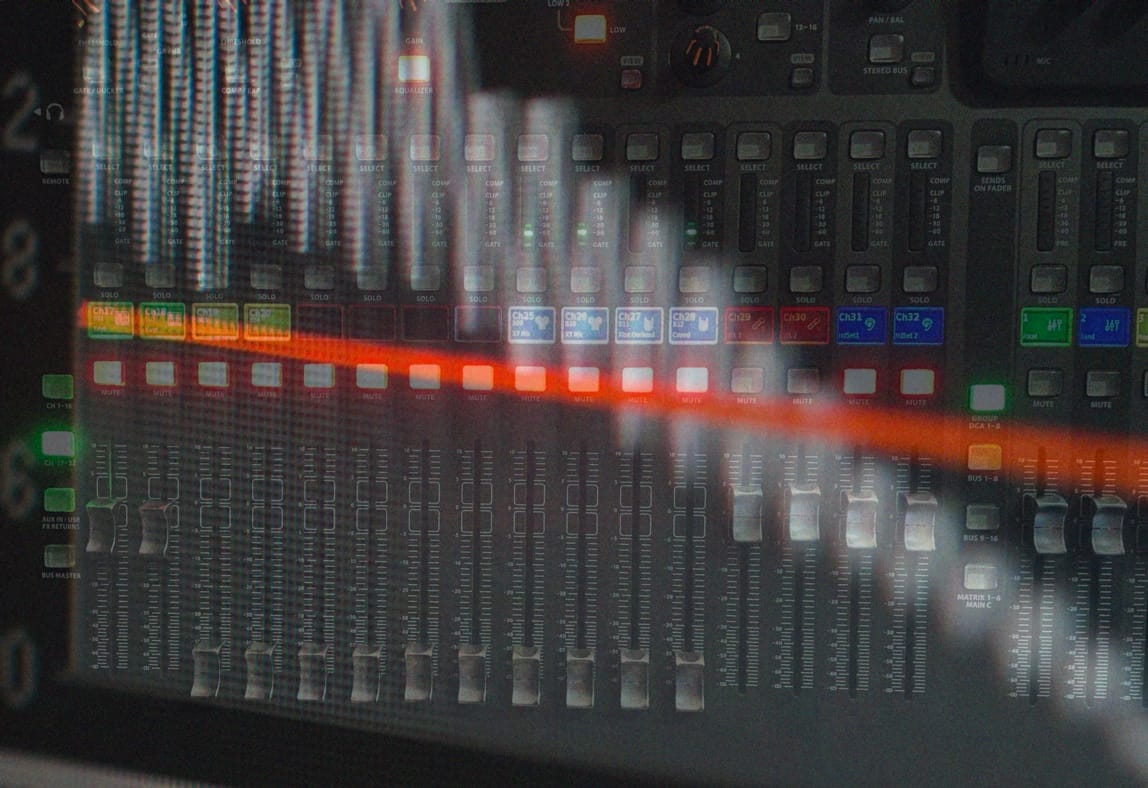Noise
Let’s suppose distraction noise used to be low intensity and low powered on old radio speakers. Now, factors like the rise of the smartphone, invasion of the attention economy, and the dawn of AI-juiced distraction networks have changed the noise distribution system considerably.

You have likely heard of white noise, it’s the static-y sound roughly imitating moving water.
White noise is all the frequencies we can hear playing evenly across the spectrum. That’s 20 hz to 20,000 hz. Think of white noise as an uncanny symphony with all hearable notes played simultaneously and evenly (until you shut down the digital orchestra).
There are other flavors of this all spectrum noise, in fact, a whole collection of colorful noises. Pink, brown, blue, grey, violet, and white according to some internet medical sources.
Sounds like someone could assemble a cacophonous, sound fixated, Power Ranger squad.
While white noise is even across the hearable audio spectrum from 20 hz to 20,000 hz, pink noise for example increases the intensity of lower frequencies on a slope. All the other noise colors have relative combinations and slopes of the high end, low end, or mid range frequencies.
Depending on the power of your speakers, white noise can sound like a snake hissing or an airplane taking off arm's length from you. White noise at a high volume makes conversation impossible. You’ll lose the ability to hear anything quieter than your speakers in that environment. At a loud enough decibel level you would be physically unable to hear anything else until you ran away from the source of the sound.
It’s been 22 years (in 2025) since Switchfoot wrote their alternative rock hit, “Adding to the Noise.” And that was in an era when smartphones were not even secretly prototyped in locked down labs at Apple. Steve Jobs didn’t greenlight iPhone development officially until the end of 2004.
If a Gen Z Switchfoot wrote their song in 2025 it would likely be called “Drowning in the Din.” (Though to be fair, older thinkers were also verbally opposed to the noisy distraction created by radios and television sets.)
Let’s suppose distraction noise used to be low intensity and low powered on old radio speakers. Now, factors like the rise of the smartphone, invasion of the attention economy, and the dawn of AI-juiced distraction networks have changed the noise distribution system considerably.
Distraction and information overload have become concert level speaker riggings that distribute personally-tailored and colored noise in your direction at deafening volumes. Simply because the noise is now tailored to our exact liking doesn’t mean the strength of it is at all good for our attention and hearing.
It doesn’t matter much if the high end or low end frequencies are relatively higher or lower anymore because all frequencies are blasting us with incredible sound pressure either way.
This level at which conversations and ideas are being transmitted, we are increasingly unable to distinguish ideas amidst superpowered static issuing from our ubiquitous notifications.
One of my recurring concerns about my blog is whether the write up is quality enough to warrant subjecting other people to my expression of a particular idea. But as of late, one of my new concerns is that my writing and sending anything at all means subjecting friends to another piece of the noise.
“Am I merely raising the noise floor of an email inbox and smartphone overflowing with distraction? How can I curb and not contribute to the digital content avalanche? Do my ideas need to be heard online?”
Noise in focused frequencies at intentionally arranged times, is a beautiful thing. That’s essentially what music is.
Unfiltered digital noise is the last thing we need. Whether that’s nano, micro, mega, long form, or AI digital content.
(Didn’t use an AI to write any of this by the way… Though I imagine AI bots could scrape my blog to "make me sound better than myself.")
I’m still working out how to filter this digi-noise myself. Looks like TGC is also looking with deadly seriousness at screens and tech in their upcoming 2025 book titled: Scrolling Ourselves to Death.
Your filters for this noise will look different for your needs and skills at coping with it. We need to determine how we’re each going to make music with the abundant signals we are given.
Noise is not benign if it drowns out the things we need to hear.
The attention we have risks being taken from the one who deserves the attention. We have ears for many reasons, but the primary one is from Christ and to Christ.
We definitely need divine relationship with Jesus. We really need real conversations with the people in our communities. Let’s figure how we can all navigate this noise better, together.
P.S. If you happen to be tired of this noise in your email inbox, you can always unsubscribe to my particular flavor of it.
